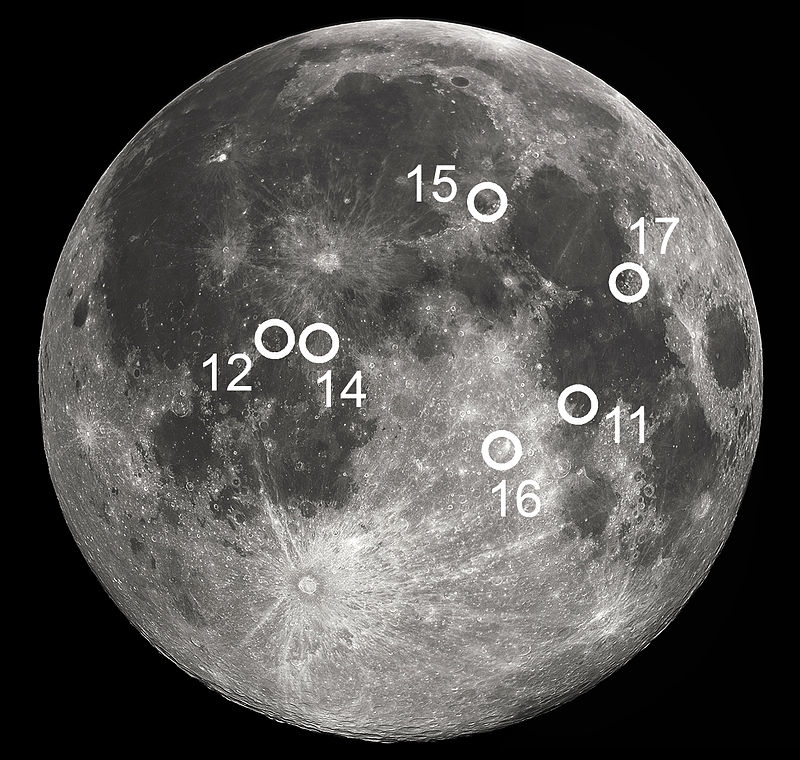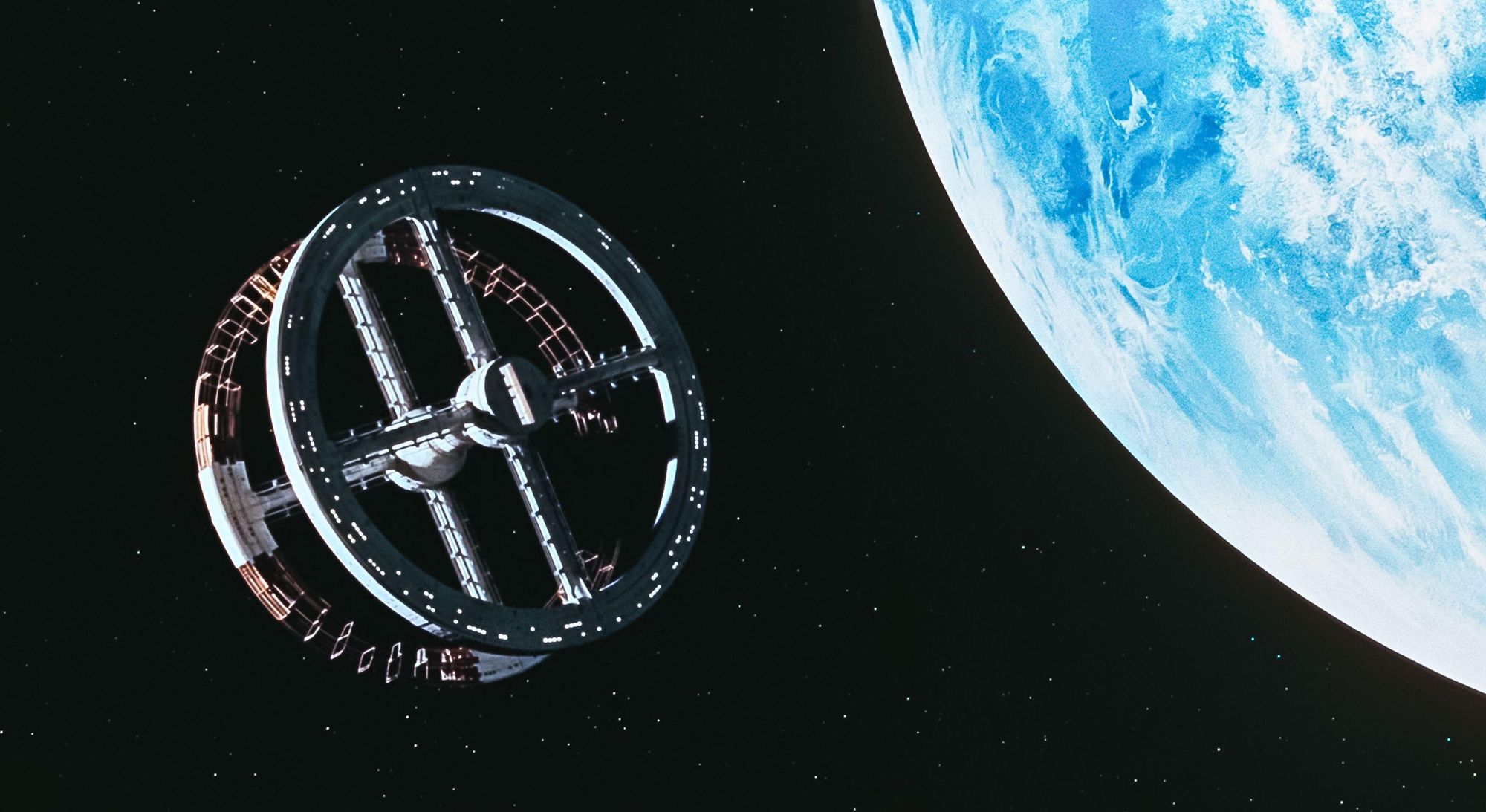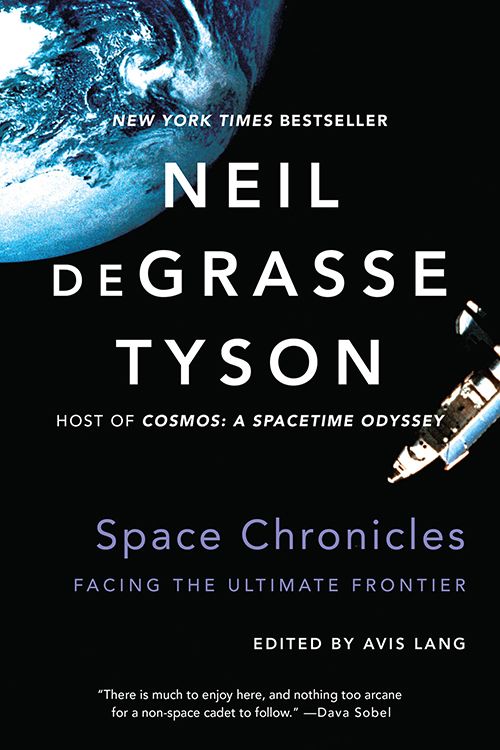Science / Tech
Is There a Future for Human Spaceflight?
In this article a number of observations are discussed that point toward a human spaceflight future deeply buried in uncertainty.

On February 6, Elon Musk and his company Space Exploration Technologies Corporation (SpaceX) accomplished the maiden launch of their Falcon Heavy rocket. It was exhilarating to watch, even vicariously through the Internet.
The payload, one of Musk’s red Tesla sports cars, is now on a deep space trajectory that will see it reach out beyond the orbit of Mars before swinging back inward on a permanent and repeatable arch about the Sun. This much lauded success brings Musk one step closer to his personal goal of establishing a human settlement on another world. While certainly a happy day for Musk and his space company, other space visionaries wishing to establish a human foothold in space have recently recorded less spectacular progress. This past Fall, XCORE – a company developing a spacecraft to transport tourists to space – announced it had filed for chapter 7 bankruptcy. And, not so long-ago, Richard Branson’s company Virgin Galactic – also a space tourism company – suffered a fatal crash of its SpaceShipOne vehicle during testing, an accident that has significantly delayed plans involving paying customers.
At the center of this orbit of success and failure – and almost certainly serving as an inspirational spark for many of these new space companies – stands the giant of human spaceflight – NASA. NASA is The National Aeronautics and Space Administration, the federal space agency of the United States of America, and in the 1960s and ’70s it placed the first humans on the moon. That accomplishment remains unique; no other organization has ever completed deep space voyages with astronauts. And while NASA continues to place astronauts in space these many decades later, no longer do they journey to other celestial bodies.
As Musk purportedly inches toward Mars and the moon landings slide ever farther into the past, it is reasonable to ask why the next human steps into deeper space are taking so long to happen? In this article a number of observations are discussed that point toward a human spaceflight future deeply buried in uncertainty.
I. The Hard Easy Step

Let’s begin with the collapse of XCOR, and the apparent end it brought to the development of their suborbital Lynx spacecraft. Many people noticed that sub-orbital tourism did not arrive on the scene as fast as expected. We’re still waiting, actually, even though it seemed imminent 13 years ago, after Scaled Composite won the X-prize (a monetary prize payable to the first company to perform back-to-back flights into sub-orbital space). The failure of XCOR along with the ongoing anticipation of such flights ‘someday’ indicates that the industry is being challenged. But it is certainly not a definitive signal that the end is near – Virgin Galactic and space tourism competitor Blue Origin remain active, and their spacecraft may fly with tourists sooner or later.
The delay does tell us something, though. Many may not be aware of the mighty gulf that exists between sub-orbital and orbital flight. To the uninitiated they seem very similar; a suborbital ride is over quickly but both make it to space. A closer look, however, reveals the shocking difference. Suborbital vehicles reach a speed near one kilometers per second at the time of rocket engine shut down, and because of this, they remain in space for only minutes. For low altitude orbital flight, at that same point, speed is only slightly shy of eight kilometers per second. What really counts is the energy of motion, which is proportional to the square of those velocities. The hard truth revealed by the physics is that these suborbital spacecrafts can only achieve a paltry one to three percent of the kinetic energy acquired by other similar sized vehicles propelled into a continuous circular orbit. Why is this bit of physics interesting? XCOR, Virgin Galactic, Blue Origin, and others have shown that suborbital systems – which energetically come nowhere close to reaching orbit or deep space – are far from trivial to develop, even though some of these companies have access to wealthy supporters. Given the suborbital challenges, it seems reasonable to conclude that far grander plans involving a viable commercial movement of people into orbital hotels and on to Mars will be a much greater challenge; one that carries with it a commensurate uncertainty as to when it will happen or whether it will happen at all. No disrespect to Elon Musk.
II. Half a Century Ago
Hundreds of spaceflights have been completed since 1961, but only nine of them went anywhere. Those nine flights spanned a brief period of four years with the first occurring nearly half a century ago. They went to the moon, of course, and relatively speaking that was a journey of significance: one thousand times farther out from Earth than the International Space Station (ISS) astronauts will ever go. Recall, also, that between December 1968 and November 1969, four of the nine lunar excursions occurred: Apollo 8, Apollo 10, Apollo 11, and Apollo 12. Amazing; all this in less than 12 months!

Criticize the Apollo moon project all you want (for cost, for motive, for social injustice) but when done you must admit the obvious: it got the job done. President Kennedy said let’s reach the moon before the end of this decade and it was done, twice! With the lunar goal set in 1961, action followed. There was no paralysis caused by non-stop pontification; or a parade of endless commissions, committees, reviews, task groups, studies, and perpetual precursor science (can the human body handle 2 weeks of weightlessness and radiation?). Sure, much of this stuff happened back then, but urgency required speed and decisiveness such that actual physical progress could occur. This had to be true, or years would have become decades, as appears to be the case today.
The Apollo moon program (which included the manned missions of projects Mercury and Gemini, and other supporting activities) was financed by the government of the richest and most technologically advanced country in the world. Apollo was one of the responses by the United States to a national level threat from communism that carried, at the extreme, the potential of nuclear annihilation. This is what it took to initiate the charge to space.
This combination of epic scientific and technical competency, buttressed by a credible threat of death, engineered the flights to the moon. It was an emergency unique to the time, that took place in space but was not about space.
That effort was in motion half a century ago (the great Saturn 5 moon rocket completed its first test flight November 1967). Half a century! Nothing like it, not even close, has come along since to equal that level of motivation for further cosmic advance. Absent such Apollo ingredients, human spaceflight today finds itself confined to low earth orbit, where the charade of spaceflight is devoid of the exhilarating elements of exploration and exploitation.
III. Post-Apollo
So Apollo got the job done. But what about the post-Apollo programs? The space shuttle, as projected in the 1969 Presidential Space Task Group, was originally envisioned to support a more expansive space program involving space stations, the moon, and Mars. In the end, only the shuttle survived the political vetting process. The question then became, “What to do with just a space shuttle?” The emphasis shifted to maximizing its potential as an economical mode of access to space. But this could only happen if the shuttle flew often, enabling overhead costs to be averaged over many flights. Consequently, early in its career, the shuttle was being prepared as the sole launch provider for all American (and some foreign) payloads. The shuttle, unfortunately, was not up to the task; it was too complex and labor intensive. The Space Shuttle Challenger disaster in 1986 changed things even more. No longer was the shuttle everybody’s launch vehicle, and gone was any promise of cheap access to orbit.
The space shuttle history lesson can stop here. The point is to illustrate that the shuttle was a program that began with a mission, lost it, and then went in search of another, and then another. This was the opposite of project Apollo and, at a minimum, raises the question of the shuttle’s purpose and importance.
The other significant post-Apollo program has been the International Space Station. President Ronald Reagan authorized the program in 1984, construction began in 1998, and it orbits overhead today. It is, ostensibly, a research facility. The only thing unique to the ISS, that is unavailable to ground-based laboratories, is its continued access to freefall. In a previous article (see ”Microbench research”, The Space Review, December 5, 2016) I point out that freefall, often erroneously defined as ‘zero-gravity,’ is less exotic than it appears and meaningful industrial developments from such an environment – once viewed as promising and a potential driver for human occupation of space – have proven elusive for over 45 years. The futility of the ISS serving as a proving ground for some type of orbital industry has been known for some time. When president George W. Bush announced his 2004 ‘Vision for Space Exploration’ (VSE), he was made aware of this, and outlined then the only thing of value left for the ISS to do: “We will focus our future research aboard the station on the long-term effects of space travel on human biology.” And that remains its primary mission to this day.

By the way, it was envisioned that the human biology research had an end point. Publicly available information from the time of Bush’s announcement indicates a plan to end ISS research, and the ISS itself, around 2016. Like the phase-out of the space shuttle before it, ending the ISS program was required to free up money to fund the VSE; but the end almost certainly signaled a recognition that by 2016 – after decades of research – it was finally time to take what we know about weightlessness, along with what we learned about mitigating the bits harmful to the human body, and get on with the job of venturing into deep space. This research will continue, however, for some time to come – possibly to 2028.
Absent any plan for real space adventures, and a need to justify the continued operation of the ISS, the near-perpetual scientific investigation into the effects of weightlessness on the human body continues. Consider this very recent quote, attributed to an ISS astronaut set to fly in late 2018: “Space has tremendous effects on the human body! As we prepare for journeys to more distant destinations like Mars, humankind must tackle these risks to ensure safe travel for our modern explorers.” No doubt there are still questions to ask and problems to solve, which will be true forever. But, honestly, for how many more decades will this be the epicenter of human spaceflight?
I can’t help but get the impression – I’m sure others have – that these post Apollo programs have survived, not on their own merits, but as enterprises carried forth by the momentum of Apollo and an overwhelming nostalgia for the greatness that once was. Apollo was such a striking visual symbol of American greatness that to completely end human spaceflight would be tantamount to declaring a deliberate retreat from greatness to the world. Enough people advocate for the illusion, and so it continues.

IV. A Business Case for Human Spaceflight
It is simply empirical to conclude that no national government has initiated, to date, a movement of people beyond low earth orbit since 1972. The United States government has considered doing so at different times – in 1989 with the Space Exploration Initiative and again in 2004 with the VSE – but to no avail. This, despite the VSE being a beautiful plan centered on government assumption of the initial financial liability in the efforts to develop and utilize lunar resources. Other countries have also floated tenuous plans. The Europeans have (or had?) a program named ‘Aurora’ that will climax with humans on Mars, but this was announced well over ten years ago and its status is unclear. Of other nations, Russia does not seem to have any credible efforts in that direction and, as for China, well, maybe someday.
But what about the private sector? There seems to be a growing expectation that privately controlled corporations will move beyond their supporting role in government activities and become the next frontline leaders in human spaceflight. If so, I wonder how this can happen? Governments use taxation to fund human space exploration but, presumably, a truly commercial endeavor in the hands of a private company would need to generate cash flow through the sale of a product or service to private individuals? Traditionally, private companies in the space business have won government contracts to build space hardware. Such companies are only a step removed from the direct tax dollar. Remove the government, and who then becomes the customer for human spaceflight? Who else will want it? Why? And is there money available to make it happen and money to be made from making it happen?
Currently, there are several private companies developing rockets and spacecraft. A few are making money the traditional way, through the government, by transporting cargo and, eventually, people to the ISS. Some, like SpaceX have loftier goals beyond the ISS that include Mars. But if no governments are interested in going to Mars – and there is therefore no tax money – I wonder again, who else is there?
Space tourism is currently one area of private human spaceflight activity that fits, almost, the traditional capitalist idea of a commercial activity. The private company Space Adventures has brokered deals culminating in a handful of people, at great personal expense, visiting the ISS. The last such flight was in 2009. As mentioned earlier, a suborbital variant of this is in the works but has remained firmly in the future. Although this is very much a nascent industry that has yet to experience massive amounts of supply or demand, it is the only commercial human spaceflight activity going on at present. (It must be recognized, however, that the ISS tourist visits benefit greatly from the government developed and funded space station and Soyuz rocket/spacecraft.)

Whether it’s suborbital or orbital flights, or grander voyages to Mars, one must wonder about the financial incentive. Neil DeGrasse Tyson, the astrophysicist and science educator, has commented on what it takes for the release of impressive amounts of money and effort: “In all eras, across time and culture, only war, greed, and the celebration of royal or religious power have fulfilled that funding requirement.” Apollo was war and may not come around again anytime soon. Royal or religious devotion, in the West, has been diminished by the Age of Enlightenment. If Tyson’s conclusion is correct – and I think it is – then financial greed is all that remains for human spaceflight.
For people like Elon Musk, with dreams of reaching and living on Mars, the question is who will pay? Musk could, I suppose, burn through his own fortune and make it happen to some degree. But are his pockets deep enough, not only to reach Mars with people, but to make a settlement there thrive? I can’t answer that question but do encourage you all to read the excellent article by Paul Spudis entitled, “Delusions of a Mars Colonist.” There is also the recognition that a rich guy spending his own money – which was made in the old traditional and terrestrial way – on a Mars colony is not a commercial venture.
The money angle for Mars is clearly around today. The Mars One Foundation may not be thinking greedy thoughts, but it does hope to establish a permanent Mars colony that can, at least, support itself through “revenue from merchandise sales, Mars settler applications, advertisements on video content, broadcasting rights, and marketing-related sponsorships and partnerships.” Will it be enough? The first signs of strain are already evident in that the timeline, for significant events have begun to slide toward future dates.
In 2013, space tourist Dennis Tito announced Inspiration Mars. Tito had hoped to complete a short (501 days) flyby mission to Mars with a crew of two. Unable to fund the mission completely on his own – even though he is himself quite wealthy – he looked for additional financial support. But finding none, both the mission and inspiration unfortunately faded long before the 2018 launch date. I have always wondered why rich space guys like Musk and Jeff Bezos never helped with Inspiration Mars. Could it have been that there was no profit to be made?
V. The Physics of Spaceflight
Almost all of humanity, and its products, can be found on the surface of the Earth; given enough time, food, and water our own arms and legs can deliver us to all those other places. Of course, the exception, true for only 60 years, is the small amount of material blasted into space. Some of this material – many utilitarian satellites, the Hubble Space Telescopes, a space station – is surprisingly close to the Earth’s surface, while other human artifacts – the Pioneer and Voyager probes, for example – are billions of kilometers into deep space. The off-planet reach of humans, where people have physically gone along for the ride, is even less ubiquitous and closer to home: today astronauts and taikonauts inhabit an orbit a meager 350km above the ground (a truly paltry distance, amounting to 2.5 percent of the Earth’s diameter)!
Our predominate occupation on the surface – I know this sounds trite to say – prevails because the natural – the in situ – upward support of the ground provides a reliable and ubiquitous opposition to the downward gravitational force. Combined with the near-spherical nature of Earth the vast – vast! – majority of human activity takes place over a vertical range of only 5.1km, which is the height difference between sea level and, as a fair but extreme upper end, the town in La Rinconada, Peru. At a population of 50,000 people (as of 2012), La Riconada, is the highest human settlement on Earth. Consider what this means. For all but the extreme few, the full spectrum of activities in our lives – past, present, and into the future – it all happens over a trivial vertical range of 5.1km!

Recall that the Earth’s diameter is 12,740km; the practical human vertical range (5.1km) is slightly less than 0.05 percent of that distance. This is significantly less than the change in diameter caused by the dimples on a golf ball. The Earth truly is close to a perfect spherical orb. The near-perfect spherical construction of the Earth guarantees that motion across its surface is forced to occur in a mostly horizontal direction.
If not for friction, motion along a perfectly horizontal surface would be possible with zero effort. It’s true; visit a physics lab or an arcade and witness the action of a puck or flyer on an air-table, or to a lesser extent think about ice skating. Such perpetual motion is difficult to achieve in practice, but marvelous technological developments have moved us closer in that direction: the wheel, for example, has been a great help and is everywhere, from bicycles to cars and trains; ocean-going ships are another technological application that exploits the relatively low effort of horizontal motion through water.
And the point of all this?
For surface motion – and Newton’s laws provide verification – an extraordinary conclusion is reached: small forces can move large masses. Think, ‘Supertanker.’
The story, however, is very different for movement up and off the Earth. Consider a nearby first destination in space, a 200km, low altitude, Earth orbit. This represents a significant vertical climb (compared to 5.1km) and yet, once there, no tangible perch is available. For a spacecraft to remain there, at 200km, it is not simply enough to ascend that great distance, but tremendous speed (about 8km/s) needs to be acquired to maintain that circular orbit. The push against the force of gravity to reach a definitive altitude, and the need to achieve specific momentum (the product of speed and mass) once there, defines the hard physics of this action: large forces are required to move large masses (from the Earth to orbit). Think, ‘Saturn V rocket.’
The hard physics can be expressed in terms of energy. Moving a spacecraft from the Earth’s surface (involving an easterly launch from the equator) to a 200km altitude circular orbit involves a 30 million joule increase in kinetic and potential energy of each kilogram that reaches orbit. 30 million joules may seem like a lot, but in truth it only equals the energy consumed by a typical 60Watt light bulb over the short span of 6 days. However, that energy expenditure – which is for only 1kg remember – is set by the laws of nature and not negotiable. In addition, it does not express the full magnitude of latent potential which is essential in a rocket at the launch pad, because not all chemical energy contained in the propellant is subsequently converted into kinetic and potential energy of the payload. The empirical truth is not encouraging. For example, the mighty Saturn V could only deliver to low Earth orbit slightly less than 5 percent of its original launch pad mass. The physics of chemical fuel mean that modern rockets do not fare much better.
Any time that thought is given to an orbital industry, such as freefall-enabled manufacturing or solar powered satellites, the requirement to ‘get up there’ is an overhead energy cost that can never go ignored. Sure, monetary launch costs may come down as technologies and economies evolve, but the nonnegotiable energy change ensures that a price will always be paid to reach orbit. And for the history of the space age, such costs have never been insignificant, and no signs exist showing drastic improvement any time soon. This is partly because, as mentioned earlier, the movement of large masses to space require large forces. Now, earlier I talked about motion along the nearly flat surface of the Earth’s crust, and the potential to move large masses with small forces. Practically, this does not come at zero cost either. But almost certainly, whatever could occur in space needs the support of a compelling argument if it is to win over any terrestrial equivalent. Down here on the surface, where nearly all of us naturally live and work, there will almost always be a simpler solution.
VI. Conclusion
Apollo was happening fifty years ago. Many of us were toddlers then, or not even born. It looked like an exciting time and often wish I could have been there to contribute. Since then, decade after decade, we hear about bold new plans to head back out that way again, but we never do. And I wonder why? I wonder why more and more every year. What is the problem?
Until that fundamental problem – maybe more than one – is identified and fixed, what meaning is there in any new space announcement?






